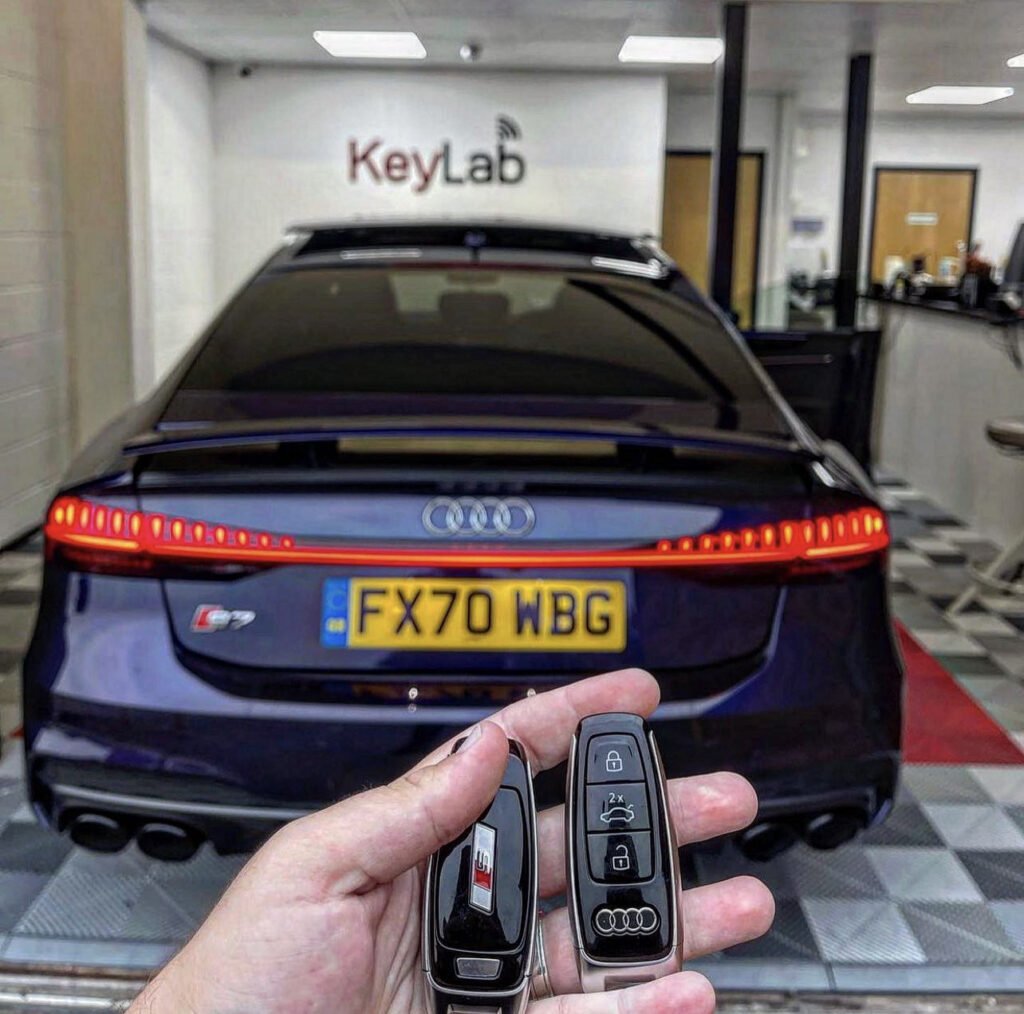How to Replace an Audi G28 Engine Speed Sensor
In this video Charles the humble mechanic demonstrates how to replace the G28 engine speed sensor. The sensor is located on the outside of the transmission over the flywheel gear. It sends a message to the ECU via a grey wire T55/49, then to the tachometer on the instrument cluster.
1. Engine Speed Sensor
The grey wire is situated on the edge of transmission, directly above the flywheel ring. The sensor transmits a signal via the grey wire to pin T55/49. The ECU then uses this information to control fuel, timig and boost. It also sends a signal to the G5 Tachometer located in the instrument cluster.
The sensor is used as a reference to correlate with the G40 Camshaft Position Sensor. The ecu has to know when the crankshaft has reached TDC, and where the camshaft lies in order to activate the spark and injectors.
If this sensor fails when it fails, the ECU will display a P00160 error code. This indicates that the Crank Shaft is not in alignment with the Intake Camshaft. It could also be a sign of a chain stretch or a jumpy chain link in the upper chain of timing. The code will not appear without the additional information supplied by other sensors (G4 or G40).
It can be a bit difficult to test because there are various connector pins, and they all have different functions. The best way to do it is to measure the resistance between the ECU and the sensor. If the sensor is operational, it should be reading around 1000 ohms. Look for evidence of coolant or oil in the connector bay if there are issues with this component.
2. Injectors
Yesterday, as i was accelerating off the highway paytoll at maximum speed I noticed a significant reduction in power. It was like the engine was running out of gas. Or, my injectors were not firing. Today, i pulled out the spark plugs. Three were soaked with gazoline and the fourth one was dry. When i crank the engine without sparks i put tissue on the top of each of the injector holes, the 3 drenched with gazoline leap out, however the 4th stays closed. I tested the ground connection of ECU pins 14,30, and 48/55. I got 0ohm. I think the issue is elsewhere.
I also tried to reset the PID with no success. The car will start when the G28 is disconnected, but it runs fine with the G28 connected. However, the intermittent misfire problem continues to occur at higher RPM. The temperature sensor for the coolant (G62) shows the wrong temperature of -49c even when i unplug it. I also noticed that the oil gauge in the cockpit shows 2 bars but the actual pressure is 0.
I'm not certain what to do, as i believe that i've eliminated everything else. But i am afraid I might have missed something. If anyone has any suggestions, please chime in! TIA!
3. Fuel Pump
The fuel pump in the g28 can be activated by a signal from the RPM sensor. The GM-style transmitter is identical to the G4 and both function in the 80, 100 200, UrS and RS2 cars so you can easily find one at a junkyard or in a local parts store. It is easy to test them: simply put your DMM into resistance mode and measure the distance between pins 1 and 2 (with the bump at the connector's end facing upwards). They must be infinite Ohms.

4. ECU
Our 20vt turbo (3B AAN, ABY and ADU) engines have an ECU that has to know the position and speed of the crankshaft to make decisions regarding timing of the fuel injector, for example. It uses a Crank Position Sensor G4 and an Engine Speed Sensor G28 to achieve this. If you encounter a problem with either one of these, the diagnostic scanner will display the codes that could trigger the engine shutting down.
A failing G28 sensor could cause an inaccurate gearbox speed counter and a gearbox which shifts faster than normal, or a misfire in gear. If you are experiencing any of these issues, it is most likely that your sensor is going bad and requires replacement. They're inexpensive and easy to locate especially if they're a Bosch unit like ours. Alternately, GM's version this part would be a good option.
5. Tachometer
A malfunctioning engine sensor can cause a variety of issues in your vehicle. It's an essential component of your Audi's transmission, as it sends information to the ECU about how fast or slow the car's crankshaft is rotating. If this sensor fails, it will disrupt the performance of the transmission, as well as the rest of the car's components.
the full report is located at the edge of the transmission just above the flywheel ring gear. It sends a signal to the ECU at pin T55/49, via an uncolored wire. The ECU utilizes this signal to regulate fuel and boost, as well as timig. It also transmits it to the G5 Tachometer located in the instrument cluster. You can test for sensor failure by examining the continuity of the sensor to the tachometer. Additionally, you can check continuity between pin T55/49 of the ECU and pin T6a/1 of the instrument cluster (trace [79trace [79]) and between pin T6a/1 and pin T26a/12. You should observe approximately 1000 ohms resistance between these two points. This is a common feature across the Audi 80-100-200-RS2 range, beginning with the 1985 MC and up to the 1997 UrS AN and the 1995 RS2 Du You may also find good ones in wrecking yards.
